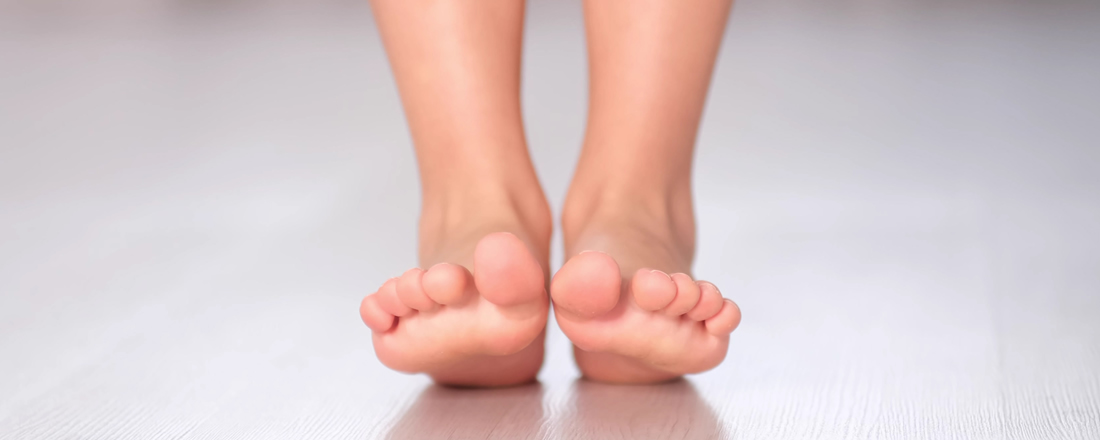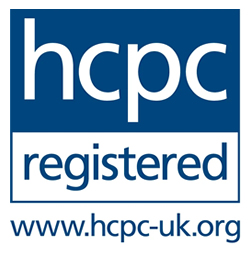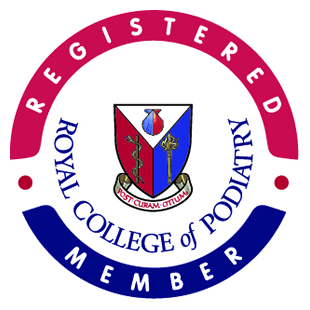
Children’s Feet (Podopaediatrics)
Children’s Feet (Podopaediatrics)
At birth, children’s feet are made of cartilage and as they grow and develop this eventually becomes bone. Our feet are the foundation of our bodies and carry us throughout our lives so taking care of your child’s feet is really important.
When to contact a podiatrist
If your child is complaining of achy or sore legs/ feet, falling often or having difficulty walking, we recommend a podiatry assessment. If you are concerned about the alignment of your child’s feet, see a podiatrist who can assess and advise.
Conditions that affect children’s feet:-
- Flat feet
- Toe walking
- Shin pain (shin splints)
- Alignment issues
- Heel pain (including sever’s disease)
- Knee pain (Osgood Schlatters)
- Ingrowing toenails
- Verrucae pedis (warts)
Flat Feet In Children
What is a flat foot?
The sole of the foot has an arch on the inner side (instep) that extends from the heel to the base of the big toe. The foot is called flat when it does not have this arch.
Although there are multiple forms of flat feet, they will all have one characteristic in common – partial or total collapse of the foot arch. Paediatric flat foot can be classified as symptomatic and asymptomatic;
Asymptomatic Flat Feet will show no symptoms and the child will not suffer from any pain or discomfort.
Symptomatic Flat Feet will exhibit symptoms and the child may suffer from pain or even limitation in their range of activity and foot flexibility.
What is the cause of flat feet in children?
Many people have a long-standing belief that flat feet are abnormal and require treatment with special shoes, insoles or even splints or braces.
We now know that the majority of children between 1-5 years of age have flat feet. This is part of normal development of their feet and over 95 percent of children grow out of their flat feet and develop a normal arch. The other 5 percent continue to have flat feet, but only a small number will ever have a problem. Most children with a persistent flat foot participate in physical activities, including competitive sports, and experience no pain or other symptoms.
Flat feet is caused by a complicated and sophisticated interaction of bones, ligaments, muscles and nerves which are within and surrounding the foot. Anything which interrupts the integrity of any of these structures can lead to a collapsed arch and cause a symptomatic condition of flat feet.
Therefore, there can be multiple causes and risk factors which can contribute to development of flat feet in both children and babies such as:
- Hypermobility (excessively flexible)
- Hereditary conditions such as:- Ehlers-Danlos Syndrome or Marfan Syndrome which can cause loose tendons, leading to the development of flat feet.
- Medical conditions such as juvenile arthritis, downs syndrome, cerebral palsy.
- Tarsal coalition, a condition in which two or more of the bones in the feet can grow or fuse together.
- Achilles tendon injury, a condition in which the heel tendon is tight and can limit the motion of the child’s foot.
- Obesity – An excess of body weight can cause an increased load and pressure on the foot causing the arch to flatten.
Is any treatment required?
Studies involving large numbers of children have shown that treatment with special shoes, insoles or splints does not alter the shape of the foot and does not give them an arch. The great majority of children under the age of five with a flat foot develop an arch in time without the use of insoles. but it can help to support and control the feet, preventing pain and damage.
When flat feet persist in children after the age of five years and they complain of pain in their feet, treatment with insoles / arch supports is used more often to alleviate discomfort Intervention can also prevent future damage. It is always best to seek the advice of a podiatrist if you are concerned.
When should I get help?
- Pain, tenderness or cramping in the feet, ankles, lower legs or knees.
- The foot arch collapsing inwards or outwards excessively when in motion (a sign of overpronation or supination). This can lead to injuries and shoes that appear to wear out quicker than expected.
- Awkwardness or a change in the way your child walks, even simple foot movements such as standing on tip toes appearing difficult.
- Voluntary withdrawal from physical activities and games, possibly due to your child having reduced energy and feeling tired quickly.
- Podiatrists are experts in diagnosing and treating foot and leg problems in children. Solutions may include advice, monitoring, orthotics, exercises.
What can I expect in an assessment?
A musculoskeletal assessment is needed. The child will be required to remove shoes and socks and roll up their trousers to reveal knees and ankles. This is so that the podiatrist can assess the alignment of the joints. The child will be observed standing, and walking. An ‘in-chair’ assessment will need to be carried out, involving a hands-on assessment to check the range of motion in the joints and muscles of the legs and feet to see if there are any restrictions or tightness contributing to the problem. Footwear is often examined. Once the assessments have been done, a treatment plan is outlined. This may involve orthoses (shoe inserts), exercises, massage and sometimes referral to a more appropriate practitioner.
In-Toeing In & Out-Toeing
Young children often walk with their toes turned in (pigeon toe) or sometimes turned out. Children usually grow out of this issue but it does need to be assessed and monitored.
It is important to have a podiatrist assess your child if he or she is still in-toeing after the age of 2 years and if it is causing pain or balance problems.
A podiatrist will determine if there is a problem and will suggest a treatment plan.
Heel Pain (Sever’s Disease)
Sever’s disease is a painful condition of the heel that occurs in growing children. It happens when the tendon that attaches to the back of the heel (the Achilles tendon) pulls on the growth plate (the apophysis) of the bone of the heel (the calcaneus). The repeated stress on the growth plate causes pain and inflammation at that site.
It most commonly occurs in physically active children between the ages of 8 and 14 years of age. This pain is often worsened by physical activity or when Achilles tendons are tight.
Pain can also be worse during a “growth spurt,” when the bones grow faster than the tendons. This increases the pull of the tendon on the heel.
While painful, Sever’s disease is not a serious condition. It will not cause long term damage or arthritis and often resolves once the growth plates close.
Signs and Symptoms
- Heel pain in one or both heels, which often comes and goes
- Pain that gets worse with activities, especially with new or strenuous activities
- Pain may cause limping or walking on toes to avoid putting pressure on the heels
- Pain that is worsened by running or jumping
- Pain with pressing on the back of the heel
- Pain is worse upon waking
Knee Pain Or Knee Problems
Knock knees or genu valgum (knees pointing in towards each other when standing) is a very common condition in young children. Bow leg or genu varum (knees pointing out) is also often seen in children from a young age.
Children will often grow out of both conditions with no special treatment necessary. However, it is important to see a podiatrist if the condition is severe, persists or the child is limping or experiencing pain. If these problems are not corrected, they can lead to more significant problems in adulthood.
Osgood-Schlatter’s disease tends to occur in children aged 9 to 16 and is usually associated with rapid growth and intense physical activity such as running, crouching and jumping. A painful lump forms below the knee as a result of inflammation of the tendon connecting to the shin bone. This condition too will usually disappear when the child‘s growth slows down. But your child should see a podiatrist if the pain is severe and persists.
Ingrown Toenails
Ingrown toenails are common in children. Causes can be trauma, toenail picking, incorrect cutting, footwear, shape of the nail. The skin can become inflamed, tender, and infected. The sooner it is treated the better.
Podiatrists are experts in dealing with ingrowing toenails and will gently remove the Skin Conditions offending piece of nail to relieve pain and pressure and encourage the nail to grow back correctly. Sometimes the area is too painful and a local anaesthetic is needed. If the ingrowing toenail becomes persistent, nail surgery can be considered.
Verrucae (warts)
Verrucae or warts may develop on children’s feet or hands and they can be painful and persistent. They will usually resolve without treatment but they can remain for months or even years.
If you are concerned, your podiatrist will be able to advise you on the best course of action.
Click here to see main section for treatments on verrucae.
It is always best to get your child’s feet checked if you are concerned about them. Things to look out for are: –
- The child is complaining of tired legs when going on walks
- The child’s feet appear to be flat footed
- The child complains of any kind of foot pain
- The child is tripping, in-toeing or toe walking
- The child complains of heel pain


